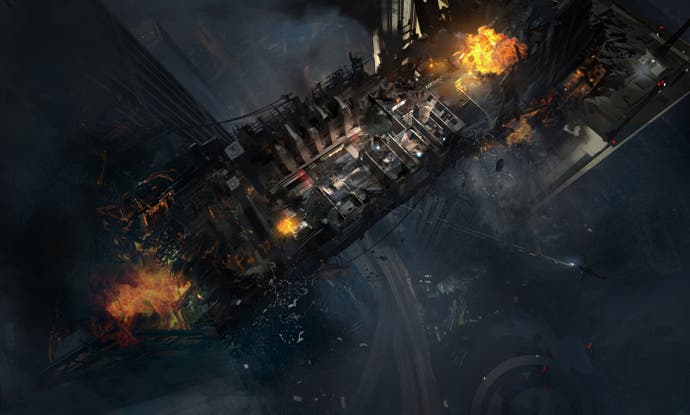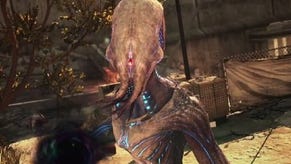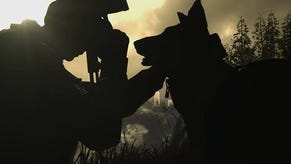Just how dynamic are Call of Duty: Ghosts' multiplayer maps?
After Battlefield 4 unveils "Levolution", Infinity Ward reveals its take on destruction.
Call of Duty: Ghosts' new dynamic maps let players set traps, destroy the environment and trigger game-changing events mid-match - but just how much scope is there to tear up the battlefield?
Yesterday Infinity Ward and Activision revealed Ghosts' multiplayer at an event in Los Angeles, and in doing so showed off a variety of new ways players can interact with maps.
The most dramatic of these was seen on Strikezone. Here, the Odin Strike Kill Streak triggers an attack from an orbiting space station that kills enemy players and reduces the map to rubble, blocking paths that were previously open and creating new cover.
Less dramatic is the ability to make the Gas Station in Octane collapse, potentially killing enemies and, again, creating new cover.
While these two examples are visually spectacular, there are other, more subtle aspects to Ghosts' dynamic map system. Infinity Ward executive producer Mark Rubin told Eurogamer that while all of Ghosts' maps are dynamic, they are so at varying degrees.
"Some maps touch on it in a few places here and there," he said. "Some maps, like Strikezone, get completely devastated."
Gameplay footage of Strikezone shows a soldier throwing an explosive at a wall, blowing it up to reveal a soldier hiding inside. But this destruction is restricted. In other words, it can only occur at that specific point in the wall (watch this in action in the video, below, at the one minute mark).
"We didn't want to make the whole world destructible, because then people run around and destroy the map, and then it's just flat and not very interesting."
Infinity Ward executive producer Mark Rubin
"We didn't want to make the whole world destructible, because then people run around and destroy the map, and then it's just flat and not very interesting," Rubin said.
Still, the dynamic maps add a new layer of strategy to the typical Call of Duty match, and are not just for show, Rubin said. "Everyone knows that can happen there, and someone's going to use it intelligently," he said.
And it's not just about destruction, either: "Some maps have traps you can set, that you can then use as part of your play strategy. So it's not always about destruction. Destruction isn't what everything is, from a dynamic maps sense. It's changing things. It's moving things."
"In some maps we haven't talked about, it literally is moving objects out of the way, or moving them back into the way," Rubin teased. "It becomes more of a map strategy rather than just, oh it looks cool to blow up a building."

The examples of Ghosts dynamic map system shown so far by Infinity Ward feature player-driven destruction, but we know of one example of that is purely environmental.
The Ghosts pre-order bonus map FreeFall sees players fight it out inside a collapsing structure that is sliding down between two skyscrapers. With every drop, the accompanying shockwaves cause further destruction, disrupting sightlines and evolving paths and chokepoints. This happens automatically throughout the match.
"So we have all kinds of stuff," Rubin continued. "It's not, oh, we've added some destructibility here and here and here. It's: there's some destructibility here, there's some environmental destructibility here, there's some player-activated destructibility here, there's some player map-changing kill streak-type stuff here. And then there's opening and closing paths and controlling points that allow you to open and control paths.
"It's a much bigger variety than just saying dynamic maps means adding a few destructible points here and there."
"I don't know if there was something in the air that made us both want to go in that direction."
As you'd expect, Ghosts' new dynamic map events have already been compared to rival shooter Battlefield 4's "Levolution" mechanic. In BF4's Siege of Shanghai map, for example, players can shoot the support structures of a skyscraper, bringing it crashing down and dramatically changing the way the map plays.
The Battlefield series, of course, has for some time now featured player-driven environmental destruction, but Ghosts' destruction is a first for the Call of Duty series.
"There was obviously no specific co-ordination!" Rubin laughed. "I don't know if there was something in the air that made us both want to go in that direction.
"For the map designers, it just came to the point of natural evolution, and wanting to do something new with our maps."












